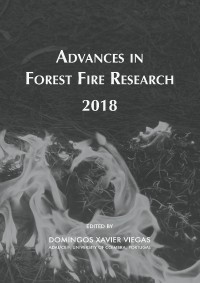Please use this identifier to cite or link to this item:
https://hdl.handle.net/10316.2/44633| Title: | Mapping fire severity levels of burned areas in Galicia (NW Spain) by Landsat images and the dNBR index: preliminary results about the influence of topographical, meteorological and fuel factors on the highest severity level | Authors: | Arellano-Pérez, Stéfano Ruiz-González, Ana Daría Álvarez-González, Juan Gabriel Vega-Hidalgo, Jose Antonio Díaz-Varela, Ramón Alonso-Rego, Cecilia |
Keywords: | Fire severity;Landsat;dNBR;fire mapping;crown damage;EGIF | Issue Date: | 2018 | Publisher: | Imprensa da Universidade de Coimbra | Journal: | http://hdl.handle.net/10316.2/44517 | Abstract: | Fire severity assessment and mapping are essential for prioritizing post-fire emergency rehabilitation actions. The present study, carried out in Galicia (one of the regions most severely impacted by wildfire in the Iberian Peninsula), focused on 36 wildfires affecting areas of more than 200 ha during the period 2006-2016. The aims of the study were i) to map the severity in these wildfires by using the differenced Normalized Burn Ratio (dNBR) index, and ii) to explore how the highest levels of fire severity and canopy damage are related to topographical, meteorological and forest fuel variables. Pre and post-fire Landsat images (Path 204 and Row 31), provided by the European Space Agency (ESA), were radiometrically and topographically corrected. The dNBR index was calculated for each wildfire, and the values obtained were used to establish four classes of fire severity and four levels of canopy damage. A total of 23 topographical, meteorological and fuel variables were also determined in order to characterize each wildfire. The non-parametric Random Forests method was used to relate the burned area (%) corresponding to the highest levels of fire severity and crown fire damage to the various environmental variables. The variables that best differentiated the most severely burned areas were in both cases wind speed and percentage of burned area with slope ranging from 30 to 45%. | URI: | https://hdl.handle.net/10316.2/44633 | ISBN: | 978-989-26-16-506 (PDF) | DOI: | 10.14195/978-989-26-16-506_116 | Rights: | open access |
| Appears in Collections: | Advances in forest fire research 2018 |
Files in This Item:
| File | Description | Size | Format | |
|---|---|---|---|---|
| mapping_fire_severity_levels_of_burned_areas.pdf | 932.19 kB | Adobe PDF |  |
Items in DSpace are protected by copyright, with all rights reserved, unless otherwise indicated.
